In the very first installment in this series we took a look at the trivial ease with which “fighter” planes that require pristine airbases to operate out of can be destroyed on the ground. These airbases are far too large to ever be hidden, and can be targeted with long range missiles, up to ICBM’s, from anywhere around the world.
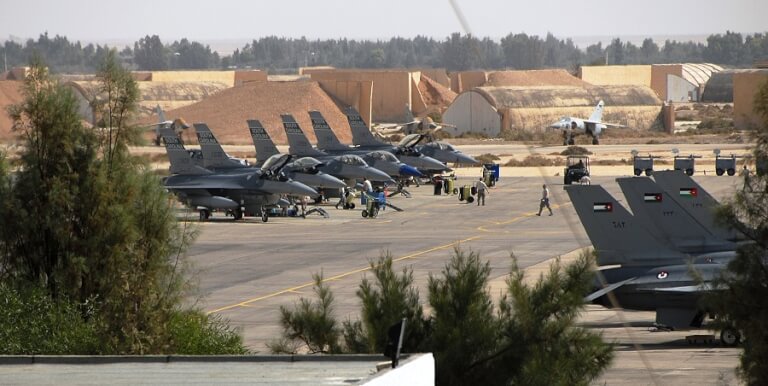
USAF base in Jordan.
Or can they?

Artillery is pretty easy to understand. Typically used at distances of around 20km, sometimes more, sometimes less, you’re lobbing some explosive at your target and hoping for the best. Even ignoring the practical difficulty of identifying targets for artillery bombardment, there are two other limitations to longer range artillery. First, in order to get such distances we need exponentially large cannons.

Schwerer Gustav. Range, 47 km.
Secondly, we need exponentially accurate fire, as measured in degrees off target, even ignoring the accumulated and insurmountable effect of wind and other atmospheric effects on our projectile. If we are firing at something that is twice as far away, the same error in accuracy will work out to missing our target by twice as much. There are other practical problems, such as the explosions from the ultra long range artillery being hard to spot, making it hard for the crews to correct for the next shot.

Russian Iskander SRBM system.
But we’re not really concerned with that. It’s not really up for debate that you can destroy airbases with artillery bombardment if you get close enough to them. Instead we’re focusing on the missiles, starting with the Short Range Ballistic Missiles (SRBM), like this one pictured above. While the precise definition varies, these guys are small enough to be transportable by trucks, and yet large enough to have practical ranges. The Russian Iskander has a range of about 500 km, and they have used them supposedly to great effect in the Russia-Ukraine Conflict.

Same thing, but camo.
You might be wondering how a ballistic missile could possibly work. After all, wouldn’t we need the amazing accuracy of artillery, multiplied many times over? Well no, because the term “ballistic missile,” is a bit misleading. Unlike cruise missiles, which have small wings and fly through the air, the ballistic missiles get up to very high velocities before arcing down the to earth. However, they do still have guidance systems and some method of nose pointing so as to course correct on their way back down.
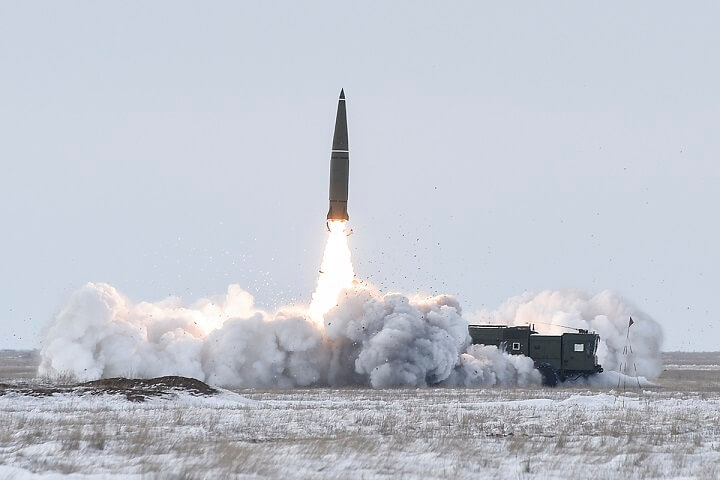
According to Wikipedia, the 9K720 missiles fired by this system use:
Inertial guidance, optical DSMAC (Iskander-M), TERCOM (Iskander-K), use of GPS / GLONASS in addition to the inertial guidance system[9]
Inertial, use of GPS / GLONASS and optical DSMAC terminal homing
For the record, I’m starting to think that Wikipedia might be completely full of shit. Terrain mapping makes sense for a low flying cruise missile, and very little for a ballistic missile that is flying in an arc and doing some minor course correction.
I included this video because it gives you a good idea of how ballistic missiles look in operation. The very high trajectory, along with the very steep decline to the target. For our intents and purposes, they can be thought of as long range rocket artillery with course correction for accuracy.

Above is an image I found on Wikipedia showing the accuracy of various Inertial Navigation Systems compared to GPS. GPS, something most of us are familiar with from smartphones and other devices, is the most accurate, and has the very pleasant bonus that errors do not accumulate. If you’ve ever wondered why your phone can still track your location when your in a tunnel, it’s because it also has a very crude Inertial Navigation System, which is accurate enough in the minute or so that it takes for you to go through the tunnel.
Inertial Navigation Systems (INS) use the concept of dead reckoning. Basically, if we know where we are, and we know how fast we are moving, than we can figure out where we are 10 seconds from now. The INS keeps track of the velocity changes, and allows us to use this system for more than just moving in a straight line at constant speed.
The problem with INS, and the reason why the multibillion dollar GPS system was invented, is that it’s subject to cumulative errors. If we imagined that we are moving in a straight line at 100 m/s, if our INS thinks we’re moving at 99 m/s, which is 99% accuracy, every second that goes by it drifts an additional 1m off our true location. After just 10 seconds, instead of us being 1km from where we started, it thinks we’re 990 m’s from our start. After 100 seconds, it’s off by 100 meters. After 1,000 seconds, which is just 16:40, we’re off by an entire kilometer.
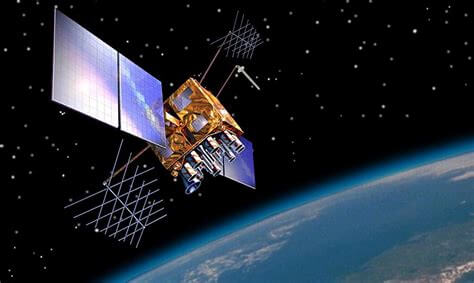
Drawing of GPS satellite.
In contrast, our GPS guidance will give us a certain error that is constant. If the average error is 3 meters, then we will be 3 meters off after one second, and 10 hours. INS systems certainly have their place, but there is a reason why all short and long range missiles use GPS guidance, with INS as a fallback.

Above we see Russia’s 3m14 Kalibr missiles, which they have also used quite a bit in this latest conflict. They are very similar in all aspects to the US Tomahawk missile.
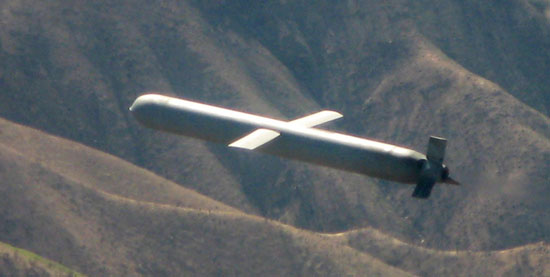
US Tomahawk missile.
Unlike ballistic missiles, which act much like artillery, cruise missiles have that tiny wing to provide 1G of lift. They also usually are subsonic, with the Kalibr and Tomahawk being no exceptions. Effectively they are like the modern version of the Japanese kamikaze fighters from WW2.
The claimed max ranges for these cruise missiles is about 2,500 km. With speeds of around 900 kmph, that would take close to three hours. With an INS with an accuracy of 99.9%, they would still have generated a cumulative error of about 25 kilometers. That’s why the GPS system exists. Without it, these weapons have very little usage.
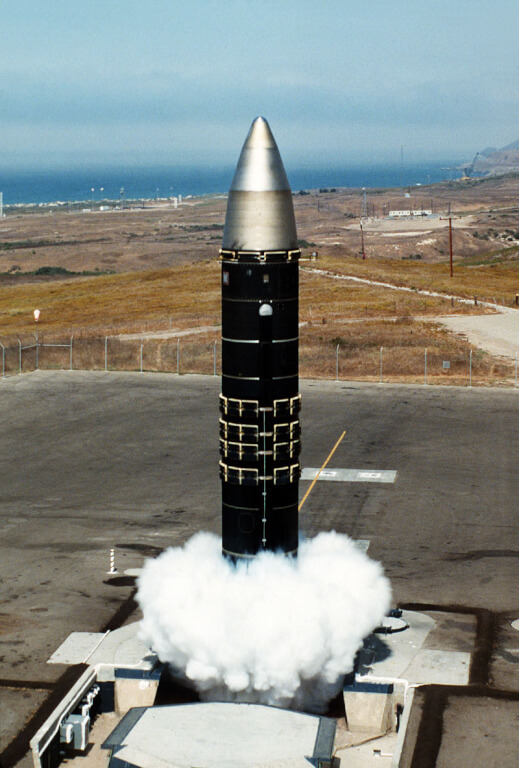
ÊLGM -118A Peacekeeper ICBM
Except that apparently these ICBM’s all use Inertial Navigation Systems.

The U.S. Air Force has conducted an operational test of its LGM-30 Minuteman III Intercontinental Ballistic Missile (ICBM) from Vandenberg Air Force Base in California. The missile was unarmed, carrying a single test reentry vehicle according to the Global Strike Command.
In an operational attack the LGM-30 would be armed with a Multiple Independent Reentry Vehicle or “MIRV”. The MIRV payload on a Minuteman III includes three separate 300-500 kiloton nuclear warheads with independent targets. The warheads separate upon reentry into earth’s atmosphere above their predetermined targets and strike over a wide area. The use of multiple reentry vehicles for large warheads makes intercepting them over a large target area nearly impossible. The missile’s NS-50 inertial navigation system is largely immune to countermeasures once launched and is accurate to within 200 meters according to the Minuteman III’s builder, Boeing.

Oh yeah I’m sure that the Minuteman III ICBM can fly 20,000 km’s, halfway around the world and land within 200 meters of the target, 90% of the time, based on nothing more than the Inertial Navigation System on board. That would mean an average velocity error, speed and heading combined, of just 0.001%. I think it’s far more likely that Boeing is completely full of shit, or these missiles are also using GPS guidance.
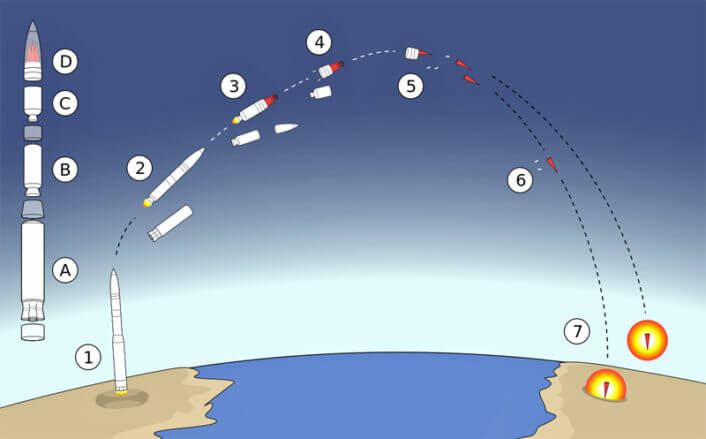
Well it turns out that they aren’t, because they’re old. The Minuteman III was developed in the 60’s, and the first ones were finished in 1970. The first satellites used to create the GPS system were launched in 1978. They didn’t use GPS, because it didn’t exist yet. However, I don’t even have to waste my time figuring out how accurate they actually are, since the newer ICBM’s that will be replacing these ones use GPS guidance. Either the INS on these old ICBM’s truly have “200 meter accuracy,” as Boeing claims, and they are going to a GPS system on the newer ones for absolutely no reason, or Boeing is completely full of shit.

My money’s on the latter. I highly doubt that even with a GPS system, we could get accuracy down to 200 meters, 90% of the time. The re-entry vehicles have no ability to change course. Once they get launched, it’s all ballistics. Which means the accuracy needs to come from the fifth stage, two pictures above.
We need to be releasing the re-entry vehicles carrying the warheads at the exact precise angle so that they will carry forwards and hit the ground within 200 meters of their intended destination. Oh and the absolute minimum distance we need to launch our re-entry vehicles is from 62 km’s up, where the Earth’s atmosphere starts. And even that would assume that we are directly overhead of the target. Since we need to come down with some horizontal velocity, you can go ahead and push that up to something like 100 km’s.
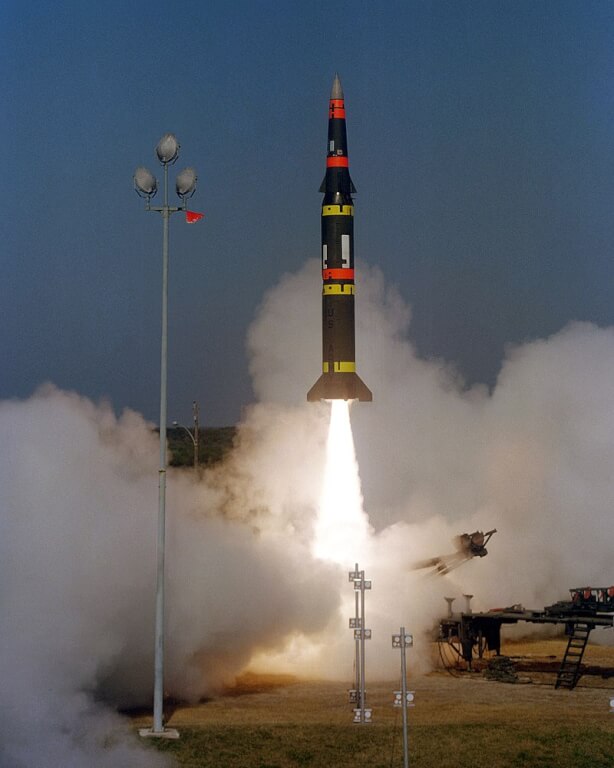
Pershing II, with the MARV.
If you’re about to point out that some of the ballistic missiles have maneuverable re-entry vehicles, such as the Pershing II medium range ballistic missile, pictured above, save your breath. The Pershing II was the only such missile in the US inventory, and it has been retired. The Russians/Soviets had just the R-27k, and cancelled it. While we can’t know for sure, I suspect these were retired/cancelled because they don’t actually work.

I am beyond skeptical of the supposed accuracy of these ICBM’s. Having said that, I’m not sure it even matters, at least for some targets. Even with an accuracy of just 20 km’s, 90% of the time, fire enough of those at New York/LA/Moscow/Beijing and you’ll get the destruction you want. While nuclear warheads are indeed just big bombs, since a 1 megaton warhead is 1 million times stronger than a 1,000 lbs bomb, they are quite big indeed.
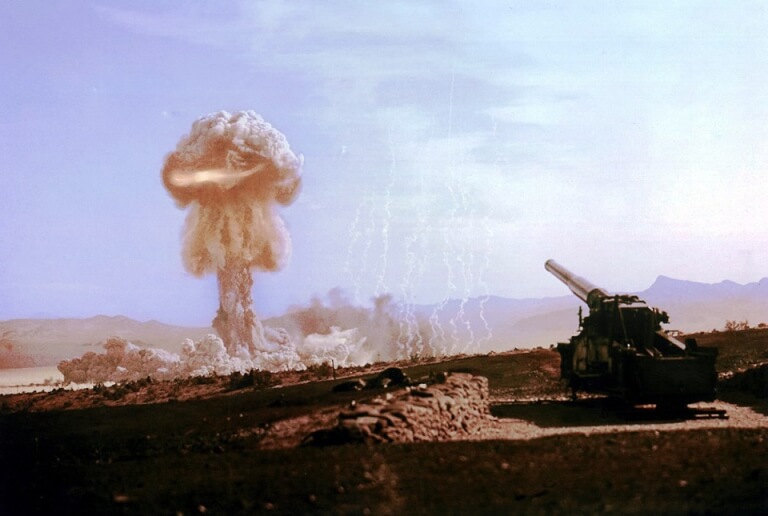
15 Kiloton test.
There are three main effects of a nuclear bomb, heat, ionizing radiation (neutron and gamma radiation), and blast overpressure. The ionizing radiation gets absorbed and scattered quickly by the atmosphere, and is essentially irrelevant. If you are close enough to the bomb to get irradiated, you’re probably dead anyway.
This is different than the long term effects of irradiating the area with the unused uranium, or other radioactive fuel, that wasn’t used in the explosion, but was instead scattered throughout the area. The long term effects, while serious, don’t really affect immediate airbase operations. In the middle of WW3, we are not going to stop operating our airfields if the servicemen have a 50% higher chance of getting cancer before the age of 60. Or even numbers many orders of magnitude higher.
Thermal radiation in the form of infrared light, is important, but somewhat less important than blast overpressure, again due to atmospheric absorption and scattering. This hits first, and can cause things to catch on fire, so calculating the exact effects is somewhat difficult. It can of course also simply roast you alive. If you were standing on an open field in the prairies, completely naked, this might be the most damaging effect on you, since the human body is quite resilient to blast overpressure, but not so much flash burns.
Like all light, infrared naturally decreases in intensity with the square of distance traveled. If you are 10x further from the blast, you will experience 1/100th, the infrared radiation. However, we also have to factor in atmospheric absorption. Underwater explosions essentially have zero infrared radiation, since water effectively absorbs it. Through the atmosphere it is a little different, although the water in the air will also absorb infrared light. Of course, so will clothes, as the gruesome flash burn injuries from Hiroshima Survivors can attest to.

Thermal Flash Burns
Extreme infrared levels causing third degree burns are no laughing matter, although the extent to which they can kill is entirely dubious. The same is true for the extent to which they can penetrate clothing, which is minimal.

This picture needs a bit of explanation. On the right we see the effects of exposed skin, versus clothing. The general shape of this mans shirt can be seen, with what looks like and is indeed very similar to a sunburn on his skin. The left is a little different, with this unfortunate woman having certain parts of her clothes catch fire and burn her. The areas that were tighter and harder to get off her skin burned her more, which is why you can see a loose outline of her straps, where the material touches her shoulder, and the patch on her back it was stuck to.

I should make it very clear. Infrared radiation can most definitely cause casualties even when the blastwave doesn’t cause casualties. Unprotected skin is very vulnerable to thermal radiation, and I’ve heard conflicting reports, but it is generally accepted that somewhere between 8-10 km from a 1 megaton blast you could still be getting third degree burns from direct skin exposure to the infrared radiation. It’s true that protection from this is as simple as not being line of site to the blast itself, even if you’re just behind a tree, soil, or whatever. Protecting your skin is as simple as wearing longsleeved shirts, pants, and facial coverings and tinted goggles, provided the material that the clothes are made from is non-flammable. This is entirely unreasonable to ask of the civilian population, but would be demanded for military targets.

It’s much harder to calculate the secondary effects, such as fires. The image above is from Hiroshima, but it isn’t the bomb’s mushroom cloud. This is the result of a secondary fire that lasted for three hours. It’s very difficult to figure out exactly what these effects would be for any given nuke, since it very much depends on the surroundings. Military buildings, made from concrete, are much more resistant to secondary fires than houses made of wood. Areas with forests in summer are going to be more likely to burn than swamps in the winter. The problem is that I can’t just arbitrarily pick a range and say “the secondary fires will destroy x in y radius,” due to the above factors.
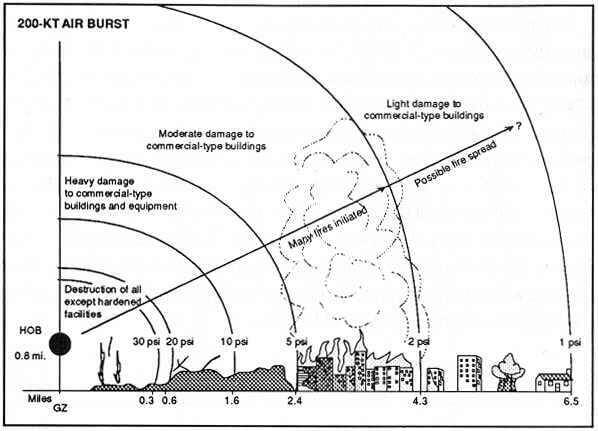
But that’s actually somewhat besides the point, since the generally accepted most deadly effect of nuclear bombs, especially to structures, is the good old fashioned shockwave. Up to about 10 PSI anything but reinforced concrete structures will be destroyed. Even some light bomb shelters only offer protection up to about 20 PSI. It is somewhat reasonable to build our military structures to be far more rugged than civilian areas, but even still, I highly doubt we can get away with assuming an average blast protection of much higher than 20 PSI. And even then, we’re assuming something like our airbase having all of the planes inside of what are borderline bomb shelters. Not necessarily very reasonable.
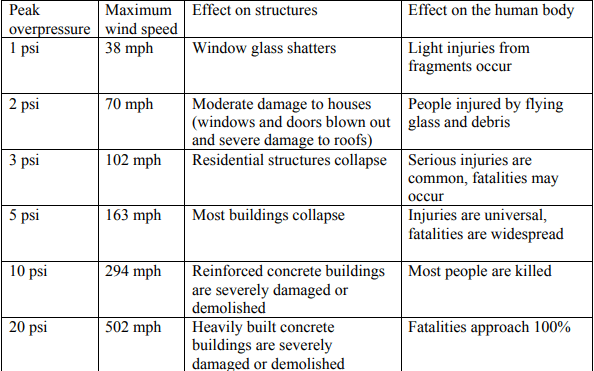
If we took a nuclear warhead with a yield of 1 kiloton, and a warhead with a yield of 1 megaton, the 1 megaton warhead would only have an effective destruction radius of 10x more. This is because the blast overpressure decreases with the cube of distance from the blast. However, the area that it covered would be 100x larger. This is very important. If we want to destroy a large number of things in an area, having a large warhead is great, since even if we miss the target, there should be other things to destroy. If we’re trying to destroy a single hardened target all by itself, then a small warhead is fine, since accuracy is what’s important. This is one of the reasons why nukes are not really all that great if you’re trying to destroy small, hidden, isolated targets. It’s also yet another reason for the small refinery strategy I outlined in the previous post.

It’s almost not worth mentioning, but our refineries are absurdly easy targets. they’re easy to destroy, and their areas are enormous, making them easy to hit. The Port Arthur Refinery, pictured above, has an area of around 4,000 acres. That works out to about 16 square kilometers, in a roughly 4×4 arrangement. Needless to say, even if your ICBM has an accuracy of merely 2km, 90% of the time, you’re still landing inside of the area of the refinery, at which point catastrophic or potentially complete damage will occur.
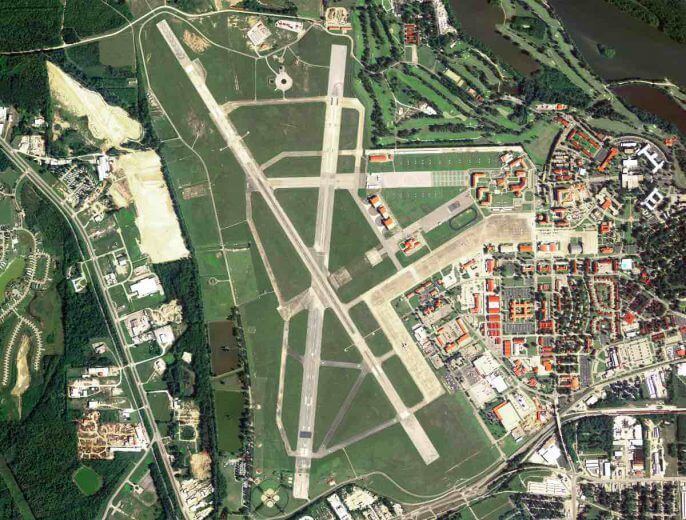
X marks the spot.
But this series was called “fighter planes are jokes,” not “modern militaries are jokes,” so what accuracy is needed from our ICBM’s in order to destroy these pristine airbases? Well, helping the missile is that we can fire many more than one at them. We really need only one direct hit out of however many we have to throw at the problem. Something like 10 or even 100 warheads per airbase is far from an unreasonable ask, considering the strategic importance. Then again, airbases are mostly flat, empty space with hangars, that could theoretically be protected moderately well against nuclear blasts.
It’s honestly a question I could go forever trying to answer, but I’ll go ahead and say that we need a 90% accuracy to somewhere within 2-5 km of the target. Less than 2km, and our 1 megaton warhead is going to destroy the area fairly well. More than 5km, and we start really having to rely on lucky hits, which makes this a poor strategy for consistently destroying enemy airpower.

Can our old, INS guided ICBM’s give us that kind of accuracy? For the reasons detailed previously, I doubt it. Can the GPS guided ones? I’d certainly bet on it. However, will the GPS satellites be working during WW3?

Russian ASAT missile test.
Anti-Satellite missiles, such as this Russian Kosmos-1408 missile, are theoretically capable of destroying any satellites out there. Four countries operate them, US, Russia, China, and India, and all four countries have shot down at least one of their own satellites in order to demonstrate their efficacy. This leads us to yet another Contradictory Bullshit of the Military Industrial Complex interludes.
- GPS Guidance is fantastic. All modern long range missiles use them because, frankly, you need it. But these missiles that use them are totally serious weapons in a real war against a real adversary.
- We’ve got these anti-satellite missiles that are super effective. Press a button, and the satellite dies. So the GPS system is going to be destroyed within minutes on WW3.
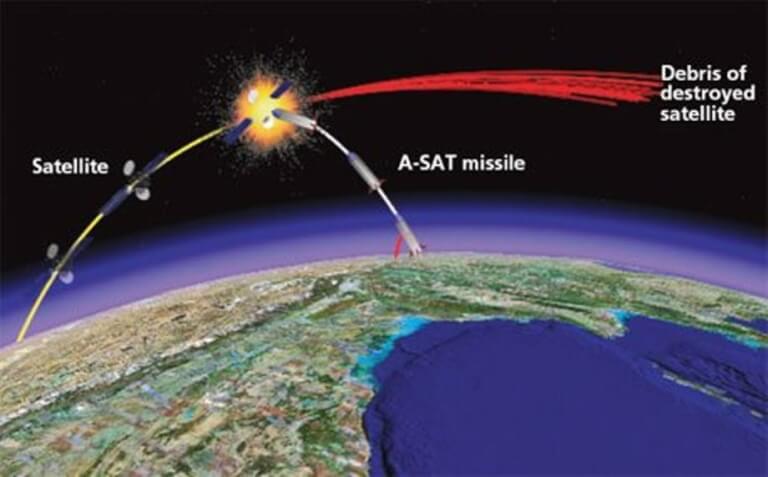
Truth be told I have no idea how well this actually works in practice. I also don’t know if these countries are stockpiled with enough of them to make it work right. However, at one extreme we have them working flawlessly, and so relying on GPS guidance is completely absurd for WW3. And, BTW, it’s hard to hide GPS satellites because they have to be constantly broadcasting their positions anyway. On the other extreme, they basically don’t work at all and are nothing more than jokes. But I mean, either the ASATs are jokes, or the ICBM’s are.

This was a lot of words to say little more than “I really don’t know how effective ICBM’s are going to be in a serious war,” but that’s all I can offer. It could be true that the INS systems are accurate enough that they don’t need GPS guidance, and the new ones are getting GPS guidance purely for graft and corruption reasons. I doubt it, but I don’t know. It could be that anti-satellite missiles are complete jokes, or hyper effective. I don’t know.
What I do know is that relying on ICBM’s to destroy small, hardened targets is not necessarily something I feel comfortable doing, having really thought it out. When you get this much contradictory bullshit from the MIC, all you can do is throw your hands up and say “I’d need to see some testing.” Me spending 1,000x more hours figuring out exactly what’s bullshit, and what’s the truth is not really a productive use of my time.
ESPECIALLY BECAUSE IT DOESN’T ACTUALLY MATTER
The shorter range, where by shorter I mean up to about 2,500 km’s, in atmosphere cruise and ballistic missiles have been shown to have great accuracy. Then again, they need GPS guidance, and if it’s taken out, they could well be pretty much useless. If that were true, they wouldn’t be of much help taking out airbases.

Except that you could literally just load up some WW2 era prop driven planes with nuclear bombs, or even large conventional bombs, fly them over the enemy airbase, and drop them. Put a few of your own fighters there for escort, assuming your fighters can take off and land from hard to find, hard to destroy rough fields, and that’s it. Enjoy victory.

Remember, these modern “fighters,” aren’t designed to be able to take off and land from rough fields, or even dirt airstrips, with the possible exception of the Russian fighters, and maybe the Swedish Gripens. The ease with which we can destroy modern airbases with missiles/nukes, is only half the story, the other half is that these princess fighters are entirely dependent on them. If you’re using even remotely comparable planes to the enemy, then if you’re in range, so are they. If their planes are capable of doing anything to you, you can always just go and fly over their airbase and destroy it.

Reminder, WW2 fighters could take off and land from rough, even lightly snowy fields.
You don’t even need working missiles to go cripple the USAF. Some Piper Cubs with small diameter bombs would do the trick just fine.
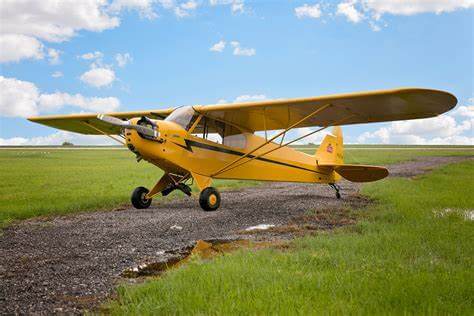
Do a massed attack with these things, with some modifications to allow small bombs to be held, and that’s it, airbase destroyed.
It is cartoonishly ridiculous how easy it is to destroy modern airforces. The Piper Cubs would not be the best option obviously. They don’t have good range, they have poor speed. They aren’t designed to carry weapons at all. Etcetera.

Purpose built Armed Air Recon planes, like the OV-10 Bronco pictured above, armed with some small diameter bombs are literally all you need to utterly wreck the entire USAF. That’s how fucking comical it is to not have fighters that can take off and land from short, rough fields.
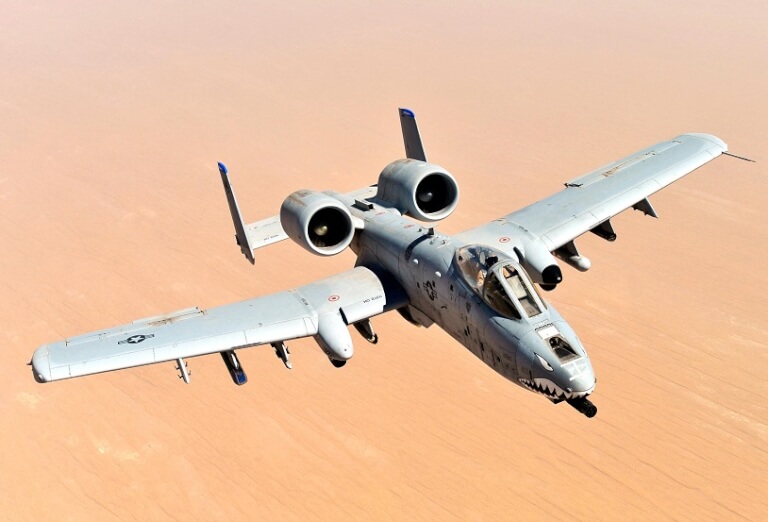
Pictured, overkill.
You don’t even need this. You really don’t. Oh sure, we could design the optimal plane for attacking airbases, and it would have some combination of speed, endurance, range, and firepower, with the 30mm shells being particularly useful for punching tons of hard to fill holes in a runway. But you don’t need this. It’s overkill. Modern air forces aren’t serious enough to demand this.
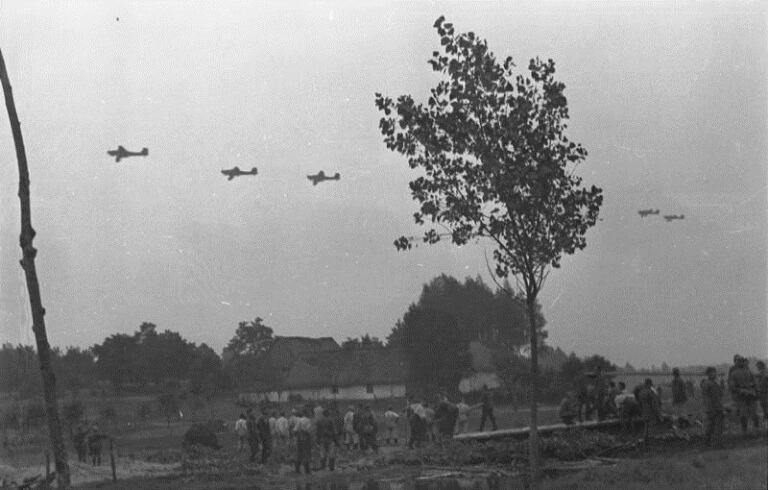
This is it. This is all you need. A whole bunch of stukas with fighter escort. That’s it. You are looking at a picture of the force required to destroy modern airforces, and it existed in 1936.

Even if you couldn’t use missiles, even if you couldn’t use artillery. You could still destroy every airbase in the USAF just by doing massed Stuka attacks on the runways, and then helping your ground forces work their way to the ruined airfields. And if you find them repairing the airfield, just go attack it again.

Modern fighter planes, being incapable of rough field staging, are absolutely 100% not serious weapons of war against any military power that can even halfway pretend to fight back. Anyone who can get a couple hundred Cessna 172’s rigged with pylons for small bombs can destroy whatever USAF base Israel’s bitch is using to bomb your civilians.

I said it before and I’ll say it again. These people don’t actually have an answer for someone like Russia spamming a bunch of missiles at their pristine, built up, concrete runway airbases. But they don’t even have an answer for someone spamming the Piper Cub Ghetto Force at them either.

Whether or not ICBM’s work is kind of irrelevant when talking about destroying fighter planes, since planes don’t have infinite range. The only thing it would change is that maybe you could bring your entire air force from one side of the world to the other using aerial refueling, where they could get one mission off before all your pilots have to eject because they can’t land anywhere.

Just so you know, air tankers typically hold about 200,000 lbs of fuel for the customer planes. At lower powered cruise it’s possible our fighters could maybe, just maybe, manage to last a whopping two whole hours on internal fuel, but that’s still burning through about 25,000 lbs of fuel every two hours. In order to support just one modern blimp fighter plane going from New York to Moscow, a distance of about 7,500 km’s, at a speed of about 900 kmph, you’d need to have one of the above tankers for every two planes. Slightly more than that even, and we’re being optimistic with the fuel use. And that’s just a one way ticket. If you want them to come back, you literally need more than one per fighter.

And with a fuel usage of more like 200,000 pounds, we’re supporting a maximum sortie rate of not 5,000 per day, but rather more like 625, not even accounting for the massive fuel consumption of the tankers themselves.

So no, even assuming that long range anti-ground missiles don’t work at all, you’re still either getting your air force princess “fighters” destroyed on the ground, or you have to cripple your size by flying them with air tankers everywhere. Which, I might add, the enemy can also do and then fly over your airbase and destroy them. In addition to just shooting down the tankers en route.

Your modern air force, goyim. Even according to their own bullshit, they can be destroyed trivially easily with long range missiles. I mean they tell you that themselves. However, even assuming that wouldn’t work, which it might not, they can still be destroyed with WW2 era prop planes doing the exact same massed attacks that we were doing in WW2.

I just can’t get over it. When it’s never been easier to destroy pristine, concrete 12,000 ft runway airbases, our parasitical military bureaucracies make fighter planes with no ability to take off and land from rough fields, despite this being even more necessary than in WW2.

Next time, we finally get to the tactical performance of these fighters. It’s the one and only area they aren’t complete jokes in, and even then, you’ll be disappointed.















